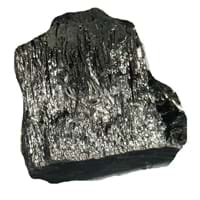Radium Thulium Comparison
Periodic Table
Symbol
Ra
Tm
Group Number
2
16
Not Available
Period Number
7
6
Block
s block
f block
Element Family
Alkaline Earth
Lanthanide
CAS Number
7440144
99+
7440304
99+
Space Group Name
Im_ 3m
P63/mmc
Space Group Number
229.00
1
194.00
5
Facts
Interesting Facts
- Radium metal is the heaviest metal of Alkaline earth metals column.
- Radium metal is highly radioactive and does not have any stable isotopes.
- Thulium metal can resist corrosion due to dry air .
- Only Tm-169 isotope of Thulium metal occur naturally.
Sources
Mining, Ores of metals
Found in Minerals, Mining, Ores of Minerals
History
Who Discovered
Not Available
Per Teodor Cleve
Discovery
In 1898
In 1879
Abundance
Abundance In Universe
Not Available
1 * 10-8 %
30
Abundance In Sun
~-9999 %
~0.00000002 %
28
Abundance In Meteorites
Not Available
0.00 %
99+
Abundance In Earth's Crust
0.00 %
99+
0.00 %
99+
Abundance In Oceans
0.00 %
99+
0.00 %
99+
Abundance In Humans
0.00 %
20
Not Available
Uses
Uses & Benefits
- It is a highly radioactive metal; and sometime Radium-223 is used to treat prostate cancer.
- It is used in luminous paints.
- Thulium metal produces isotopes that emits X-rays. This isotope is used in X-ray machine.
- Thulium element is also used in Surgical equipment like laser.
Industrial Uses
NA
NA
Medical Uses
Pharmaceutical Industry
NA
Other Uses
NA
Alloys, Nuclear Research, Research Purposes
Biological Properties
Toxicity
Highly Toxic
Unknown
Present in Human Body
No
No
Physical Properties
Melting Point
700.00 °C
99+
1,545.00 °C
23
Boiling Point
1,737.00 °C
99+
1,730.00 °C
99+
Appearance
Physical State
Solid
Solid
Color
Silvery White
Silvery Gray
Luster
Metallic
Metallic
Hardness
Brinell Hardness
Not Available
471.00 MPa
25
Vickers Hardness
Not Available
520.00 MPa
21
Speed of Sound
Not Available
Not Available
Optical Properties
Allotropes
No
No
α Allotropes
Not Available
Not Available
β Allotropes
Not Available
Not Available
γ Allotropes
Not Available
Not Available
Chemical Properties
Chemical Formula
Ra
Tm
Isotopes
Known Isotopes
33
6
32
7
Electronegativity
Pauling Electronegativity
0.90
99+
1.25
35
Allred Rochow Electronegativity
0.97
38
1.11
29
Mulliken-Jaffe Electronegativity
0.92
20
Not Available
Allen Electronegativity
0.89
99+
Not Available
Electropositivity
Pauling Electropositivity
3.10
5
2.75
19
Ionization Energies
1st Energy Level
509.30 kJ/mol
99+
596.70 kJ/mol
99+
2nd Energy Level
979.00 kJ/mol
99+
1,160.00 kJ/mol
99+
3rd Energy Level
Not Available
2,285.00 kJ/mol
99+
4th Energy Level
Not Available
4,120.00 kJ/mol
33
Electrochemical Equivalent
4.22 g/amp-hr
6
2.10 g/amp-hr
26
Electron Work Function
Not Available
Not Available
Other Chemical Properties
Ionization, Radioactive Isotopes, Radioactivity
Ionization, Radioactive Isotopes, Solubility
Atomic Properties
Atomic Number
88
30
69
99+
Electron Configuration
[Rn] 7s2
[Xe] 4f13 6s2
Crystal Structure
Body Centered Cubic (BCC)
Hexagonal Close Packed (HCP)
Crystal Lattice
BCC-Crystal-Structure-.jpg#100
HCP-Crystal-Structure-of-Thulium.jpg#100
Atom
Number of Protons
88
30
69
99+
Number of Neutrons
138
16
100
32
Number of Electrons
88
30
69
99+
Radius of an Atom
Atomic Radius
Not Available
176.00 pm
18
Covalent Radius
221.00 pm
3
160.00 pm
30
Van der Waals Radius
283.00 pm
4
Not Available
Atomic Weight
226.00 amu
26
168.93 amu
99+
Atomic Volume
45.20 cm3/mol
4
18.10 cm3/mol
28
Adjacent Atomic Numbers
Valence Electron Potential
20.10 (-eV)
99+
49.70 (-eV)
28
Lattice Constant
514.80 pm
13
353.75 pm
40
Lattice Angles
π/2, π/2, π/2
π/2, π/2, 2 π/3
Lattice C/A Ratio
Not Available
1.57
17
Mechanical Properties
Density
Density At Room Temperature
5.50 g/cm3
99+
9.32 g/cm3
40
Density When Liquid (at m.p.)
Not Available
8.56 g/cm3
24
Tensile Strength
Not Available
Not Available
Viscosity
Not Available
Not Available
Vapor Pressure
Vapor Pressure at 1000 K
Not Available
0.06 (Pa)
10
Elasticity properties
Shear Modulus
Not Available
30.50 GPa
22
Bulk Modulus
Not Available
44.50 GPa
26
Young's Modulus
Not Available
74.00 GPa
27
Poisson Ratio
Not Available
0.21
31
Other Mechanical Properties
NA
Ductile, Malleable
Magnetic Properties
Magnetic Characteristics
Specific Gravity
5.00
99+
9.32
31
Magnetic Ordering
Nonmagnetic
Paramagnetic
Electrical Properties
Electrical Property
NA
Conductor
Resistivity
100.00 nΩ·m
31
676.00 nΩ·m
5
Electrical Conductivity
Not Available
0.02 106/cm Ω
99+
Electron Affinity
Not Available
50.00 kJ/mol
21
Thermal Properties
Specific Heat
0.12 J/(kg K)
40
0.16 J/(kg K)
35
Molar Heat Capacity
Not Available
27.03 J/mol·K
22
Thermal Conductivity
18.60 W/m·K
99+
16.90 W/m·K
99+
Critical Temperature
Not Available
Not Available
Thermal Expansion
Not Available
13.30 µm/(m·K)
29
Enthalpy
Enthalpy of Vaporization
Not Available
191.00 kJ/mol
99+
Enthalpy of Fusion
Not Available
16.80 kJ/mol
17
Enthalpy of Atomization
163.00 kJ/mol
99+
247.00 kJ/mol
99+
Standard Molar Entropy
71.00 J/mol.K
14
74.00 J/mol.K
9
|
||
|
||
|












